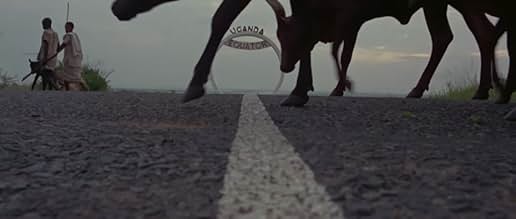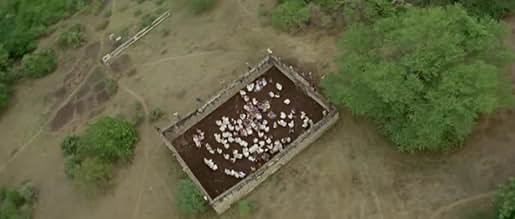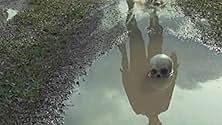Ajouter une intrigue dans votre langueThe cruel acts of animal poaching and violence, executions, and tribal slaughtering, all taking place on the African continent.The cruel acts of animal poaching and violence, executions, and tribal slaughtering, all taking place on the African continent.The cruel acts of animal poaching and violence, executions, and tribal slaughtering, all taking place on the African continent.
- Réalisation
- Scénario
- Casting principal
- Récompenses
- 2 victoires et 1 nomination au total
- Narrator
- (voix)
- Self
- (non crédité)
- Self
- (images d'archives)
- (non crédité)
- Self
- (non crédité)
- Self
- (non crédité)
- Self
- (non crédité)
Avis à la une
All of these things, and many more, are followed by this classic Mondo film. It's flawed (its narrative is shamelessly colonialist, avoiding all the atrocities that the colonizers committed and the actual causes for nationalism that led to these tragedies), but this is Heart of Darkness for the film generation: It is a glimpse into the worst that Africa has to offer, and nobody comes out looking good.
Highly recommended, if you got the stomach to watch some of the most senseless butchery ever recorded on film. If only these guys had done Vietnam.
I've watched the three versions of this film and I'm a fan of all of them. Interestingly the one I like the least is the original cut of the film which has several snide comments and re-dubbed voices that make the film truly rude and cruel for no good reason. The original cut goes out of its way to have a holier than thou view that is missing from both of the English cuts. The original cut also has several more minutes of animal cruelty that is completely uncalled for.
This film ran into serious trouble upon its original release because charges were brought, though later found to be false, that the film makers had paid some of the soldiers to kill some one so that they could film it. (this charge would form the basis for The Wild Eye, a fictional film about the making of a mondo movie made by another Mondo Cane director) Considering all of the the death and destruction in this film I find it hard to believe that anyone would have had to have been paid to kill anyone.
Yes, its a tough film, but it leaves no one with clean hands, even the film makers.
See this film. It will make you think.
The democracy our hapless African brothers and sisters thought they would receive never materialized and when their paternalistic European guardians left, most of these people suffered under the most brutal forms totalitarianism, crime, starvation and tribal genocide. They jumped blindfolded from their frying pans and landed in the fire. Would anyone dare say they are better off today then they were forty years ago? Food for thought.
But there are so many scenes from this film that stick with me.
In one, two jeeps race through the Savana with a rope tied between them. They are using the rope to mow down a heard of galloping Zebra. It is shocking, even in the age of Youtube. And yet, at the same time, it is beautifully filmed. It is horrible and yet you can't stop watching.
Honestly, Mondo Cane 1+2 along with Africa Addio have some of the best cinematography of the 1960s. The colors, framing, and composition is sublime. And I love how they play around various effects such as zooms and fisheye lenses. Many shots are handheld, which gives them an intimacy that feels very modern. Almost all Mondo spin offs got this wrong. They thought they could just toss together some uninspired shots of sex and gore. Africa Addio has sex and gore, but it makes its sex and gore into art.
Another scene in the film shows the aftermath of what is today known as the Zanzibar Revolution. From a helicopter, we see a compound full of people waving for help. The next day, we return. Now the compound is full of bodies. I've seen the aftermath of genocides in the news but this felt different. The before and after. The non-BBC style narration. It felt more authentic in some strange way. It's crazy that these shots are some of the only photographic evidence of the genocide. It's crazy that such an event was only captured by a Mondo film.
Africa Addio is undoubtably an achievement. This film managed to capture select glimpses of a world that no longer exists. And it did so in a beautiful way. Today we can overlook much of what was once considered most shocking in the film and see it as a unique work of art.
And yet, it must be said that Africa Addio is also a dangerous film. I know that the film's narrative, combined with its many powerful visual, could easily reenforce racist views. The film is dangerous if for no other reason than there's far, far more to Africa than what it presents. For this reason, I personally do not think of it as a documentary even though it consists of real footage.
I can only recommend Africa Addio to film buffs. For would be connoisseurs of exploration like myself, it is a true gem. If however you are just searching for a fun watch-or worse, looking for a documentary-look elsewhere.
Le saviez-vous
- AnecdotesThree well-known persons appear uncredited: Julius Nyerere, the first president of Tanzania, Richard Gordon Turnbull, the last colonial governor of Tanganyika, and Moise Tshombe, a Congolese politician who returned to Congo to "stop the rebellion" and died three years after this film was made.
- GaffesThere's a scene that shows bodies lined on the ground outside because of lack of space in the morgue, and are surrounded by birds. The subtitles say "The vultures are patiently waiting for their turn, after the operation." The birds are not vultures, but pelicans.
- Citations
[last lines]
Narrator: At the end of the Ice Age, a warm current broke this little colony of penguins off of the glaciers of the south and carried them here on huge rafts of ice that melted in the sun. Isolated and without the possibility of returning to their original homeland, they have for centuries been strangers in a strange land that is becoming more and more heated and hostile toward them surrounded by a sea that grows higher and more and more filled with rage. Perhaps a little peace will descend upon these waters sooner or later, before a wave stronger than the others tears them away forever from this last rock that forms the geographic end of the Dark Continent.
- Versions alternativesBefore receiving a UK cinema certificate the film was cut by over 12 minutes and was missing all footage of rotting human corpses and animal killings.
- ConnexionsEdited into Les derniers cris de la savane (1975)
Meilleurs choix
- How long is Africa: Blood and Guts?Alimenté par Alexa
Détails
Contribuer à cette page




















